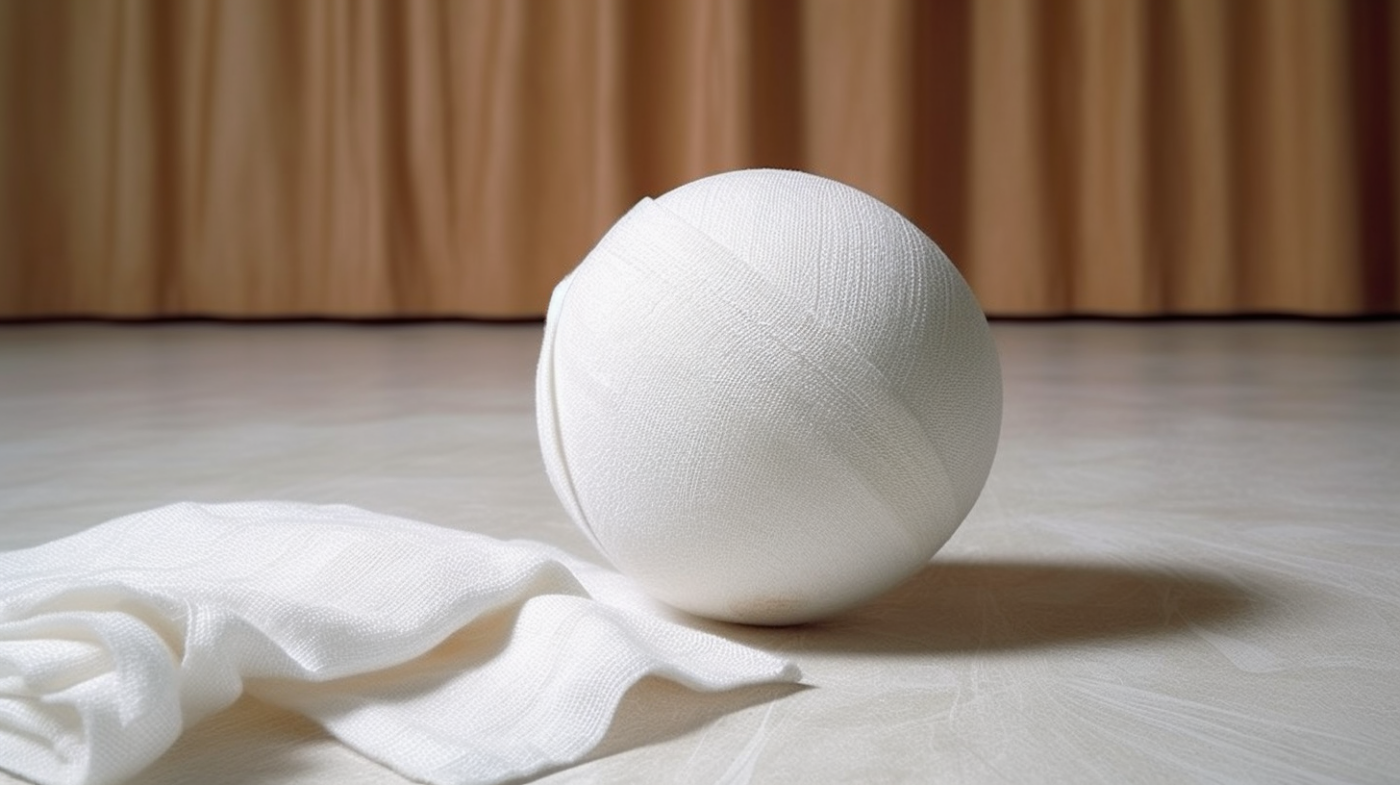Blog
Make Your Own Reusable Dryer Balls
Are you tired of using wasteful and expensive dryer sheets in your laundry routine? Look no further than flour sack towels and DIY dryer balls.
Not only are these options more sustainable and cost-effective, but they also provide numerous benefits for your clothes. Using flour sack towels in the dryer can help reduce static cling, soften fabrics, and even cut down on drying time.
Plus, unlike traditional dryer sheets, they can be reused many times over before needing to be replaced. And with just a few simple steps, you can make your own reusable dryer balls out of natural materials like wool or cotton.
In this article, we’ll explore the benefits of using flour sack towels and DIY dryer balls in your laundry routine, as well as offer tips for making and using them effectively.
Benefits of Using Flour Sack Towels in the Dryer

You’re probably wondering, “Why should I use flour sack towels in my dryer?”Well, let me tell you, not only do they reduce drying time and save energy, but they also prevent static cling and are reusable.
So say goodbye to wasteful dryer sheets and hello to eco-friendly laundry practices! Using flour sack towels in the dryer can help reduce drying time by absorbing excess moisture from clothes. This means your clothes will dry faster, saving you both time and money on your energy bill.
Additionally, using flour sack towels helps to prevent static cling without the need for chemically-laden dryer sheets. Another benefit of using flour sack towels is that they are reusable. Unlike dryer sheets which are disposable and end up in landfills, flour sack towels can be washed and reused multiple times before needing to be replaced.
This makes them a more sustainable option for your laundry routine. Using flour sack towels in the dryer offers a variety of benefits over traditional dryer sheets. They reduce drying time, save energy, prevent static cling without chemicals, and are reusable, making them an eco-friendly choice for any household’s laundry routine.
Making Your Own Dryer Balls
Let’s talk about how to make your own dryer balls! To get started, you’ll need some wool yarn or roving, scissors, and a pair of pantyhose.
The process is pretty simple and can be done in just a few easy steps.
Materials Needed
To make your own reusable dryer balls using flour sack towels, all you need are some common household items like scissors, a ruler, and twine.
You’ll also need flour sack towels, which can be found at most home goods stores or online retailers. These towels are made from 100% cotton and are perfect for creating durable and effective dryer balls.
In addition to the materials listed above, you may also want to consider adding essential oils to your dryer balls for a fresh scent. Simply add a few drops of your favorite oil onto each ball before placing them in the dryer.
With these simple materials and steps, you can create your own eco-friendly alternative to traditional dryer sheets that’ll save you money and reduce waste.
Step-by-Step Instructions
With just a few simple household items and some essential oils, creating your own eco-friendly alternative to traditional dryer sheets is an easy and effective way to save money and reduce waste. Here’s how you can make your own reusable dryer balls using flour sack towels:
| Materials Needed | Quantity |
|---|---|
| Flour Sack Towels | 3 |
| Essential Oil (optional) | A few drops |
| String or rubber bands | As needed |
- Cut each flour sack towel into four equal squares.
- Take one square and fold it in half twice to create a small square.
- Secure the corners of the small square with string or rubber bands, making sure it is tightly secured.
- Repeat steps 2-3 for all remaining squares.
- Place the tied squares into the washing machine on hot water with detergent and run through a full cycle.
- Once done, place them in the dryer on high heat until fully dry.
- Remove from dryer, untie each bundle, and add a few drops of essential oil if desired before retying them tightly again.
Once your reusable dryer balls are ready, simply toss them into the dryer with your laundry for a more natural and sustainable way to achieve softness without harmful chemicals or waste!
Benefits of Wool Dryer Balls
You’ll love the benefits of using wool dryer balls! Not only do they reduce drying time, but they also naturally soften clothes without any harmful chemicals. Plus, compared to traditional dryer sheets, wool dryer balls are a much more eco-friendly option.
One of the biggest advantages of using wool dryer balls is that they can significantly cut down on drying time. The balls work by creating space between your clothes in the dryer, allowing for better air circulation and therefore faster drying. This means you can save both time and energy (and money on your utility bill!) by using these little helpers.
Another benefit of wool dryer balls is that they’re a natural alternative to fabric softeners and dryer sheets. Traditional products often contain harsh chemicals that can irritate sensitive skin or cause environmental harm when disposed of improperly. Wool dryer balls are made from natural materials and don’t leave any residue on your clothes, making them a healthier choice for you and the planet.
Other Natural Fiber Options
Natural fiber options for softening clothes in the dryer include fluffy, wooly balls made from materials like alpaca, llama, or even rabbit fur. These natural fibers are great alternatives to synthetic materials often used in commercial fabric softeners. They provide a more eco-friendly and sustainable option to soften laundry while reducing static.
When choosing natural fibers for your DIY dryer balls, it’s important to consider the texture and durability of the material. Alpaca and llama wool are both soft and durable enough to withstand multiple uses in the dryer. However, if you’re looking for a more luxurious option, rabbit fur is incredibly soft and provides an extra layer of fluffiness to your laundry.
To help you choose which natural fiber works best for you, we’ve compiled a table comparing the different types of fibers commonly used in DIY dryer balls:
| Fiber Type | Texture | Durability |
|---|---|---|
| Alpaca Wool | Soft with some texture | Durable |
| Llama Wool | Soft with little texture | Very Durable |
| Rabbit Fur | Extremely Soft with no texture | Less Durable |
Whichever natural fiber option you choose for your DIY dryer balls, remember that they are not only better for the environment but also provide a cost-effective solution compared to buying disposable fabric softener sheets or commercial fabric softeners. Plus, they make doing laundry just a little bit more fun!
Tips for Using Flour Sack Towels and DIY Dryer Balls
To level up your laundry game and reduce waste, try incorporating these tips into using sustainable alternatives for fabric softening.
First off, when using flour sack towels as a natural alternative to dryer sheets, it’s important to note that they may not provide the same level of softness as traditional fabric softeners. However, they do help to reduce static and can be reused multiple times before needing to be replaced.
To use flour sack towels effectively in the dryer, simply dampen them with water before tossing them in with your load of laundry. This will help to activate their moisture-wicking properties and prevent static cling. Additionally, you can add a few drops of essential oils like lavender or lemon for a fresh scent without the use of synthetic fragrances.
If you’re looking for an even more sustainable option than flour sack towels, consider making your own DIY dryer balls out of wool yarn or old t-shirts. These reusable balls help to separate clothes in the dryer which allows hot air to circulate more efficiently and reduce drying time. Plus, they also help soften fabrics naturally without any added chemicals or fragrances.
Overall, incorporating these tips into your laundry routine can lead to a cleaner and greener home while still maintaining fresh and soft clothes.

